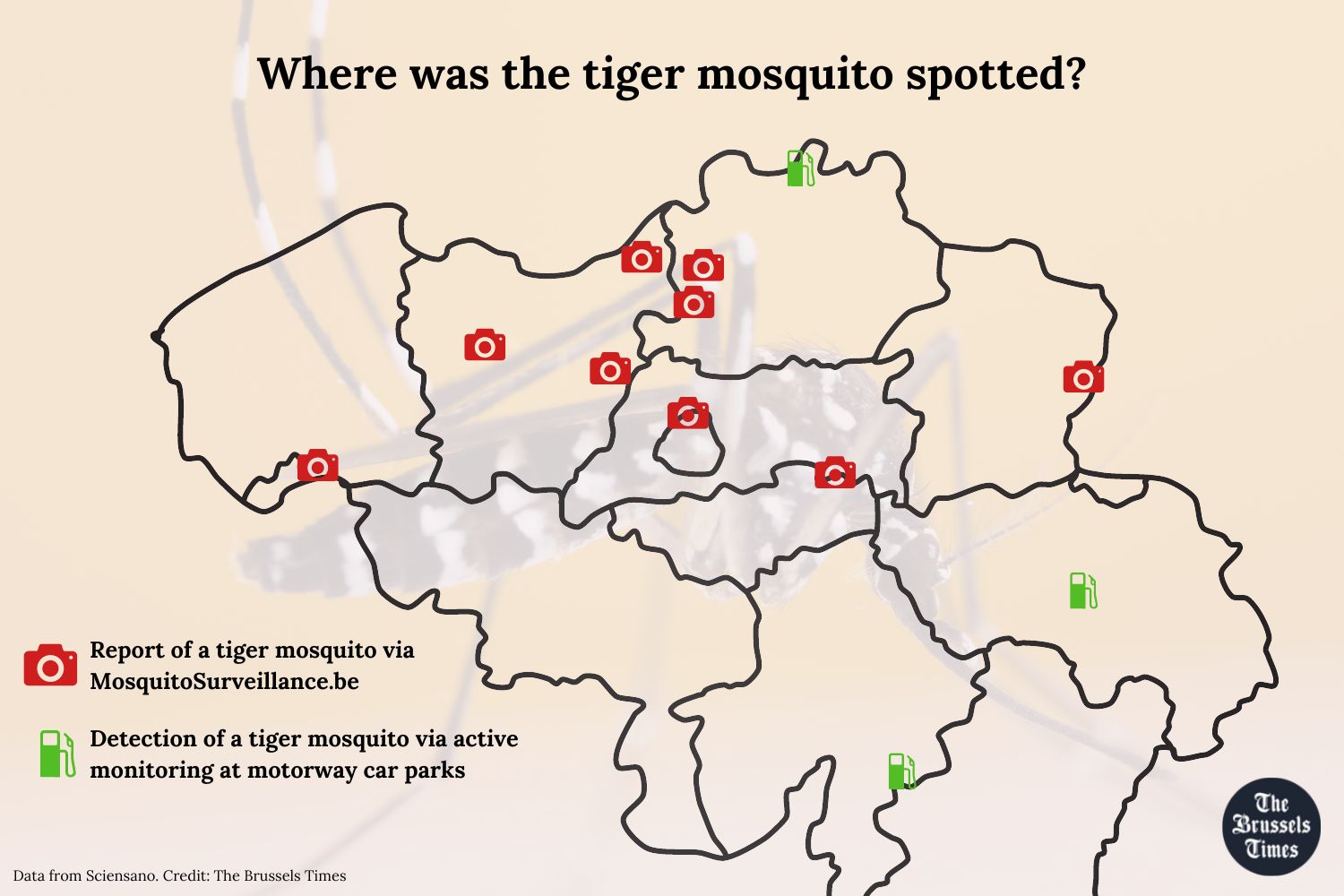The mosquito season is now over but the insects continue to bug scientists in Belgium, in particular the aggressive Asian tiger mosquito.
Every year, Sciensano and the ITG monitor the presence of exotic mosquito species through the MEMO+ project. Mosquito numbers are often monitored in motorway car parks, where insects can be carried into the country via road freight. This year, most reports came via the participation platform launched earlier this year where people can submit photos.
Between May and the end of October 2022, Sciensano and the Institute of Tropical Medicine Antwerp (ITG) received about 300 reports from citizens. The Asian tiger mosquito was identified in 12 locations in Belgium – much more than expected, Sciensano announced on Monday.
"In nine cases of citizens reporting a case, the photo we received was clearly a tiger mosquito," Javiera Rebolledo, epidemiologist and project manager at Sciensano, said. "It is quite unexpected and disturbing that we found the tiger mosquito in so many different locations."
Cause for concern?
Tiger mosquitoes exhibit a more aggressive biting behaviour than the species native to Belgium. Not only is this a nuisance, it also increases the chances of transmitting viruses such as dengue, chikungunya and zika from one person to another.
Isra Deblauwe, entomologist at the ITG, noted that at two locations the tiger mosquito also spread in the surrounding area: "This implies that the tiger mosquito was present in large numbers, which increases the likelihood of overwintering eggs and thus the establishment of the tiger mosquito in Belgium."
Related News
These unexpectedly numerous finds underline the importance of exotic mosquito monitoring in Belgium and the role that the public can play in this. "The public contribution in monitoring tiger mosquitoes is of great value and complements the active monitoring of 'points of entry'," Rebolledo noted.
Sciensano encourages people to use the MosquitoSurveillance platform from the start of the mosquito season (mid-April) and watch out for tiger mosquitoes themselves.


